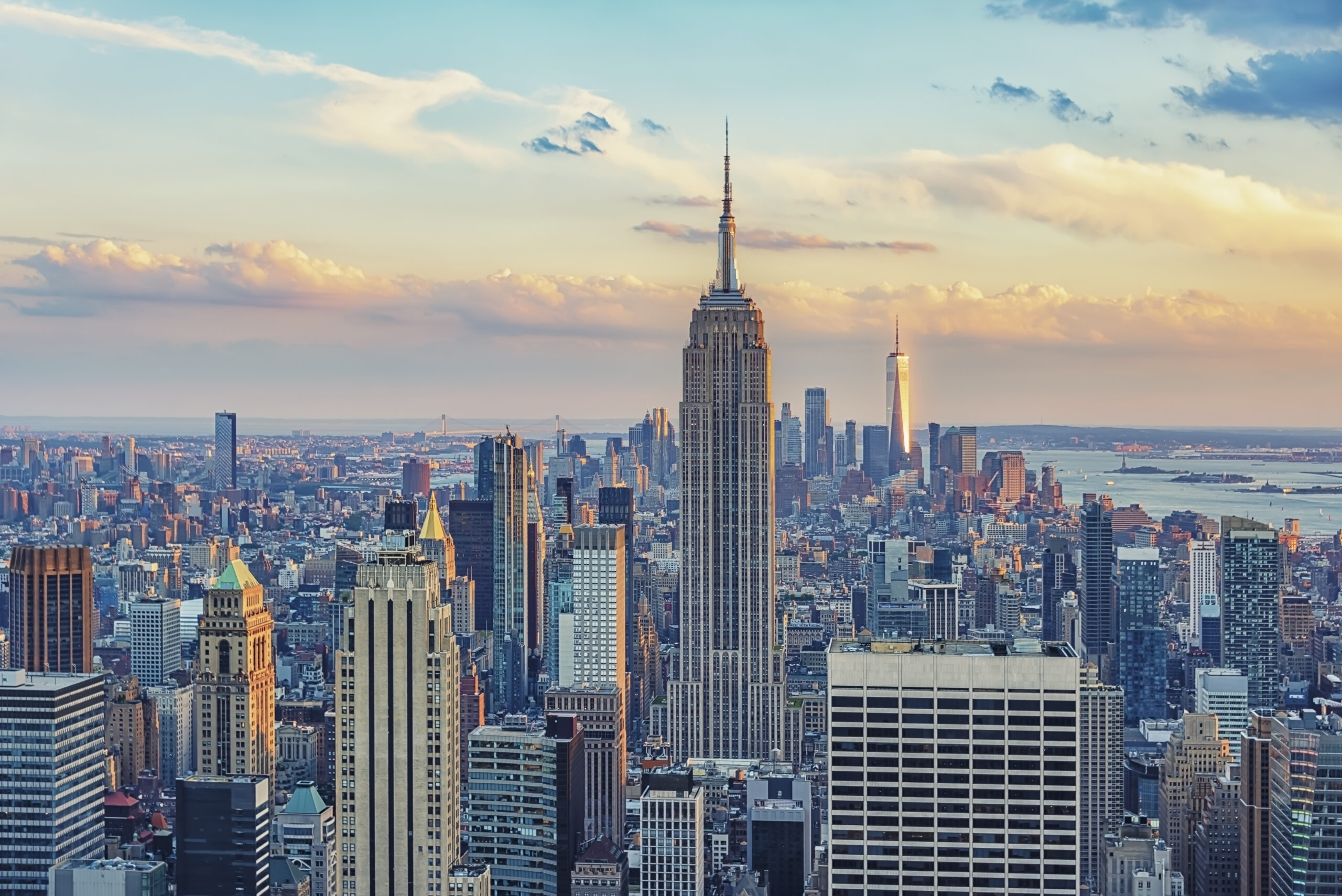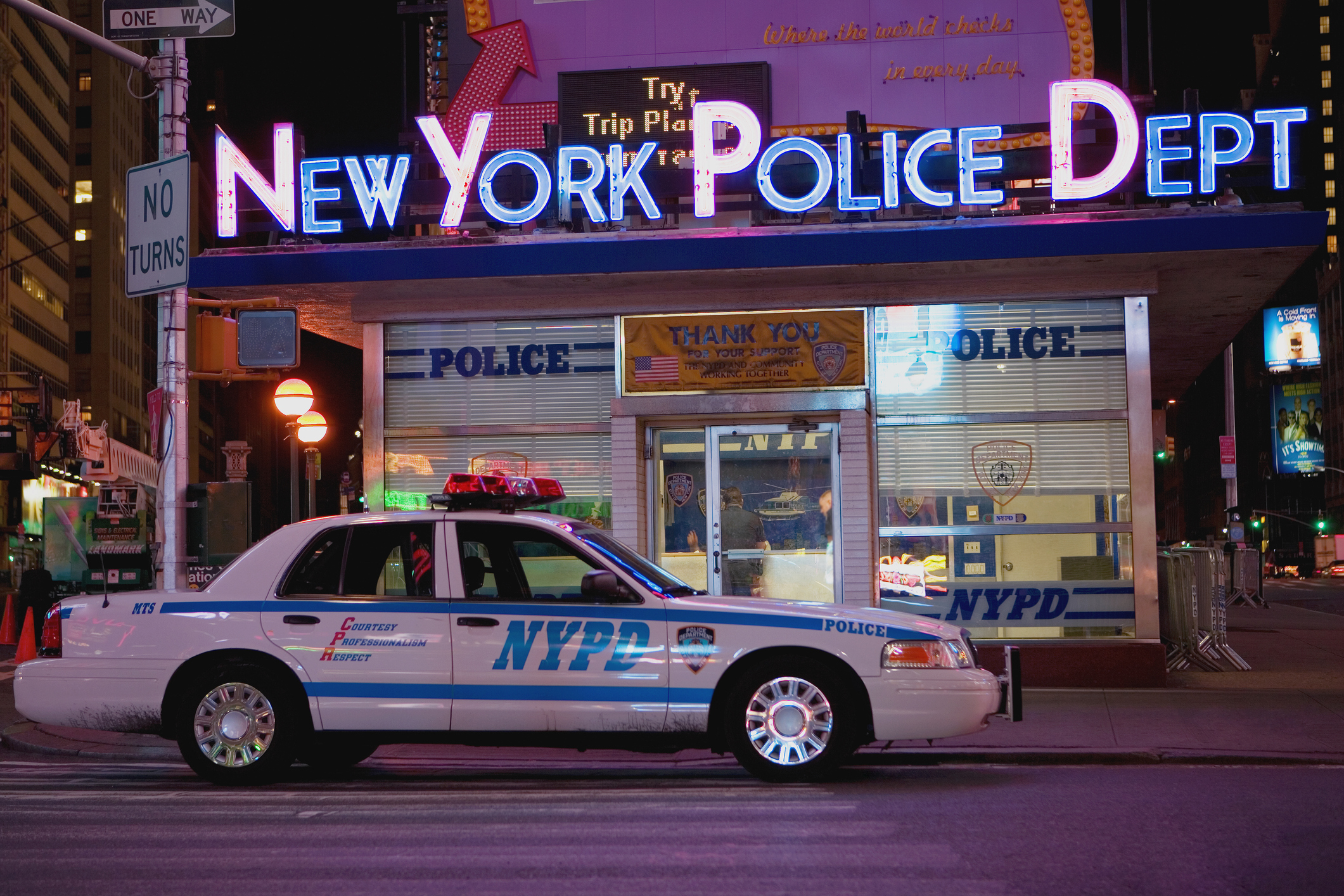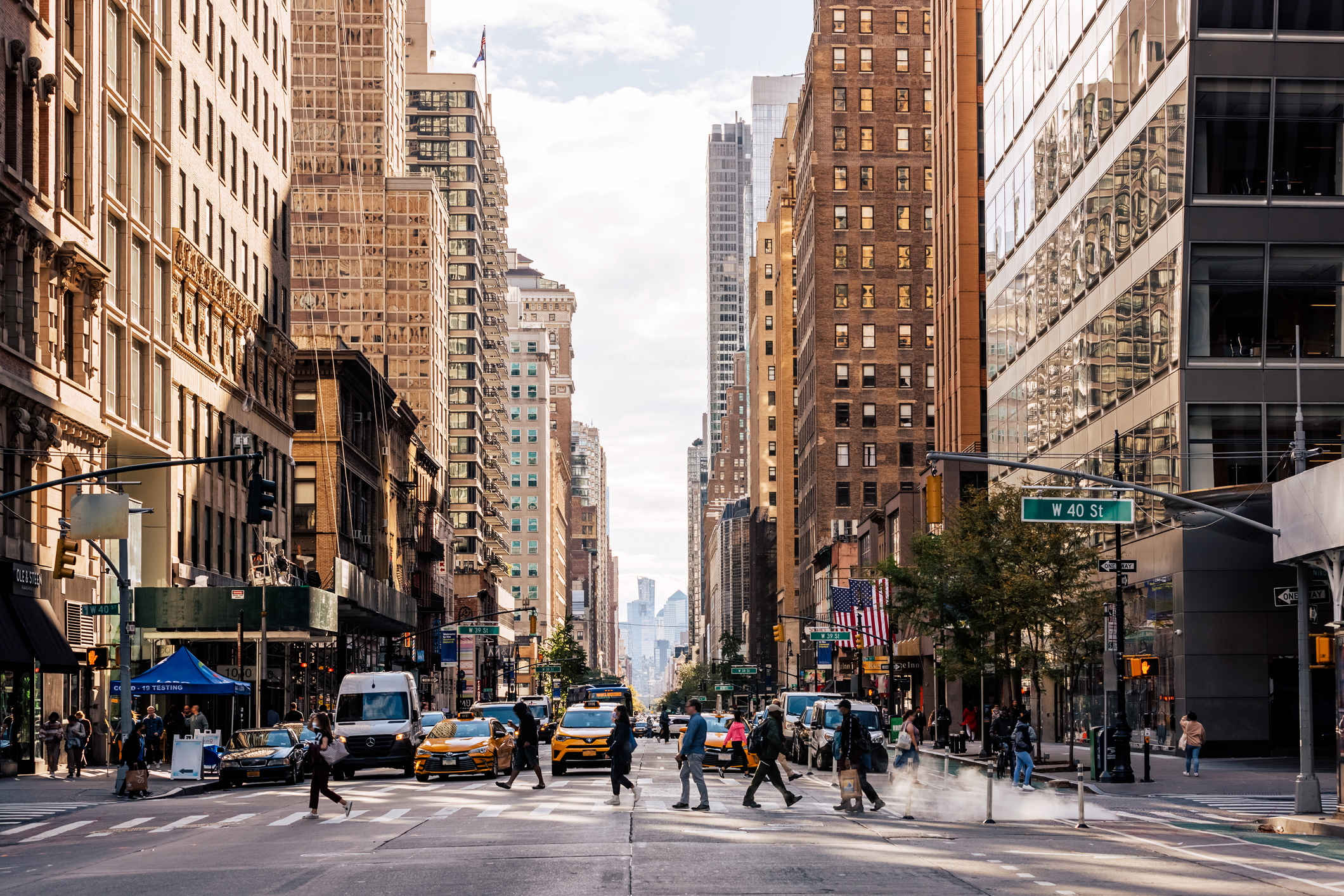What becomes of cities when the yuppies flee?
Where to, New York?

After the midterm election, the city and state need to address voters’ bread-and-butter concerns.
This piece is adapted from City Journal’s winter 2023 issue.
In an act of political alchemy, voters turned the blue ground of the Empire State purple on Election Day 2022. After the closest gubernatorial race in two decades, New York gained a national spotlight as one of the bright spots for Republicans in a midterm election that dashed months of high expectations. Representative Lee Zeldin’s strong showing helped flip four congressional seats red, forming an integral part of the GOP’s narrow House majority. But in the end, Governor Kathy Hochul will remain in the executive mansion for four more years, with her fellow Democrats enjoying supermajority control in the state assembly and senate. Voters thus continued the existing arrangement in Albany, while simultaneously repudiating it elsewhere across the state.
So what’s next for New York? With no clear mandate for elected officials, voters’ mixed signals invite political soul-searching and infighting. For city and state Democrats, the election of 2022 marks an inflection point: keep pandering to the party’s progressive wing, or strike out on a realignment for the pragmatic center. The political battles of early 2023 have already borne out these divides.
Yet even after struggling to fend off Zeldin’s attacks on deteriorating public safety and order, Democrats couldn’t agree on whether to face up to the reality of sharply rising crime since 2020. Intra-party factions quickly scrambled to interpret the election results as supporting their side. The Working Families Party and its aligned politicians on the far left claimed that they brought home the victory for Hochul, and thus deserve to chart the course ahead, including by denying the seriousness of the crime spike. One such figure, reelected congresswoman Alexandria Ocasio-Cortez, insisted that moderates like New York mayor Eric Adams were to blame for the close gubernatorial race and Democrats’ congressional losses because of their “leaning into Republican narratives on crime and safety.” The mayor shot back, asking, “If every poll shows that New Yorkers are concerned about crime and their mayor is responding to their concern, who should be at fault? Those who ignore the concerns.”
It’s hard to argue that New Yorkers weren’t buying what Zeldin was selling. Slightly more than 30% of New York City voted for him, an impressive share in light of the conservative congressman’s ties to former president Donald Trump and a seven-to-one Democrat-to-Republican enrollment advantage. Gothamites took notice as their streets filled with open-air drug use, brazen retail theft, and unchecked homelessness. Zeldin didn’t conjure their fear; he channeled it.
By the fall, subway homicides since March 2020 had already exceeded the total from 2008 through 2019. Many were unprovoked attacks by strangers with long rap sheets and histories of mental illness. The randomness of these shovings, stabbings, shootings, and punchings—often captured on video—led New Yorkers to think, “That could have been me.” Unless that changes, subway ridership won’t get past the mid-60% range of pre-COVID levels on weekdays. The problem of crime thus hovers over the MTA.
Given these factors in an unexpectedly bruising campaign, many wondered how the state’s first elected female governor would respond to her late October scare and close November win. Would she carry on as she did last spring and summer, ready to echo progressive talking points about the perception of crime, rather than the rising trends and real fears? Or would she push back against those on her left, taking a lesson from Zeldin?
Early indications suggested the latter. After the election, Hochul rebuffed progressive lawmakers, interest groups, and party leaders calling for the head of state Democratic chair Jay Jacobs, a frequent critic of the progressive Left and friend to establishment and moderate types. As Jacobs emerged as the focal point for sectarian strife, Hochul defended his record and said that she wouldn’t seek his resignation. But months later, Jacobs still faces criticism for stoking intra-party divisions, failing to build up the state party’s ground operations, and running party business out of the Long Island office of the summer camp operator that he oversees.
Shortly before Christmas, Hochul followed up with her first postelection salvo against those on her left. Despite warnings from progressive activists and unions not to nominate Justice Hector LaSalle for the state high court, she proceeded anyway. Months of concerted opposition followed, in the ugliest nomination battle in Court of Appeals history. In an unprecedented turn of events, the state senate’s judiciary committee rejected LaSalle in mid-January, initially refused to submit his name to the full senate, reversed course a month later in an unexpected floor vote, and then rejected him outright in a 39–20 vote. An embarrassed and politically bruised Hochul asked for a list of new names for chief judgeship, which has yet to be released.
In her second State of the State address—which she delivered before this nomination defeat—Hochul also proposed dropping the requirement that judges select the “least restrictive means” of securing a criminal defendant’s return to court, a meaningful but relatively modest change to the state’s controversial bail reform statute. But she failed to mention rollbacks to discovery reform, which has led DA’s offices to drop serious, meritorious cases and hemorrhaged rank-and-file prosecutors in large numbers. During last year’s budget process, Hochul pushed for changes to bail and discovery laws; she wound up coming away with only minor concessions from the legislature. After the LaSalle imbroglio, at best, history will repeat itself this year, as the budget gets finalized by the end of this month or early next.
Fortuna Fortibus
On the whole, chances are good that Hochul will weather her early setbacks. After all, her political career is a case study in adaptation. For all her campaign-trail ardor on gun control following the Supreme Court’s Bruen decision, as a member of Congress for an upstate district, she scored an “A” from the National Rifle Association and even secured its endorsement during her unsuccessful 2012 congressional campaign.
Meantime, as state progressives celebrated their win over the governor and the judicial nominee they branded too conservative, Democrats on the New York City Council were abandoning their own progressive bona fides. Leaders of the council’s progressive caucus, which enjoyed a veto-proof 35-member supermajority after the 2021 city election, asked members to sign a “statement of principles.” A commitment “to do everything we can” to shrink the size of the NYPD and Department of Correction, however, went too far for 15 members, who refused to sign it and were exiled from the caucus. The caucus now totals 20 members, less than half of the council’s 45 Democrats.
Voters’ next opportunity to weigh in on the disputes between the Democratic Party’s various factions will be the June 27 city council primary. But it’s unlikely that the results will be decisive enough to break the impasse, much less change minds in Albany.
If Hochul fails to make good on her late October campaign promise not to stop working until New Yorkers feel safe, Adams will have to hold her to it, but his expectations should be tempered. Despite his party affiliation, the mayor won his 2021 campaign with messaging similar to Zeldin’s. He hasn’t yet stemmed the crime surge, though some of the numbers are trending down in 2023. Despite his efforts, serious index crimes are still far higher than before bail and discovery reforms took effect, and he has every incentive to point a finger at Albany. During the gubernatorial campaign, he publicly demanded a dangerousness standard, which would make New York like every other state in allowing judges to consider the risk of harm that a bail-eligible defendant would likely pose if released pretrial. Hochul hasn’t gone to bat for this suggestion, however.
And hours before the mayor held a press conference early last August, during which he called on the legislature to fix an “insane, broken system” that puts serial offenders back on the street, a noticeably irritated governor leapfrogged him with one of her own. Complaining that her springtime legislative rollbacks had gone unacknowledged and had yet to be tested, Hochul said that some people were “trying to make political calculations based on this.” Though publicly the Adams–Hochul relationship remains warm, the upcoming year will tell whether it devolves into yet another New York mayor–governor feud—especially after Hochul, in her executive budget, introduced a host of new requirements on New York City that will negatively affect the city budget.
Adams again staked out moderate ground in a postelection op-ed for USA Today, where he laid out a pragmatic vision of the Democratic Party’s future. His road map centered on rebuilding working- and middle-class ties, especially in minority communities, by addressing basic issues like housing, health care, and public safety. Taking a swipe at progressives’ fixation on racialized identity politics, Adams wrote that “for America’s working-class voters, elections aren’t about their identity—they are about their survival.” Democrats, concluded Adams, should focus on “acknowledging peoples’ needs, their emotions, their reality—and doing something about it.”
The mayor will have no shortage of opportunities to put his vision into practice in the coming years, as he operates city agencies against fiscal and staffing headwinds unlike anything his predecessor experienced. Mayor Bill de Blasio, who prevailed in a crowded Democratic primary in 2013 largely thanks to union support, swelled the ranks of the city bureaucracy to unprecedented levels, buoyed by years of robust economic growth and tax-revenue growth. By de Blasio’s last budget, the workforce headcount stood at 326,176, more than 11% higher than when he took office.
After the first nine months of the Adams administration, attrition had eroded that figure to 281,333, driven by uncompetitive starting salaries and a labor force that desires some work-from-home flexibility. Despite the mayor’s longstanding opposition to hybrid work, he relented in his first collective-bargaining deal with DC37, the city’s largest public-sector union, which represents around 90,000 workers. Before June 1, the city will begin piloting a hybrid-work program.
Remaining labor negotiations will take place against a backdrop of city finances buckling under multiple stresses, some unprecedented. Rising annual pension contributions, the result of a lagging stock market, and the ongoing migrant crisis, now estimated to cost $4 billion through 2024, pose substantial obstacles. Combined with the prospect for lower tax revenue as tech companies like Meta and Twitter slash high-paying tech jobs in the city and office landlords default amid persisting hybrid work, the city’s fiscal future is in doubt.
One silver lining is that municipal job vacancies will generate cost savings. On November 21, Adams ordered all agencies to cut the number of non-uniformed open positions by half to avoid budgeting for them, a move expected to save about $350 million on paper. But unless the city streamlines operations to make service delivery more efficient, a smaller municipal workforce will get less done. A crash diet will lead to weight loss, but not necessarily better health.
If 2021 and 2022 were years for politicking in the city and state, 2023 is a year ripe for political risk-taking. With primary challenges a political lifetime away for both Hochul and Adams, the governor and the mayor will have no better chance to pursue a pragmatic, results-driven approach to voters’ bread-and-butter concerns, despite the setbacks in Albany so far. For the leaders of the Empire State and its crown-jewel city, it’s time to roll up sleeves.
The American Mind presents a range of perspectives. Views are writers’ own and do not necessarily represent those of The Claremont Institute.
The American Mind is a publication of the Claremont Institute, a non-profit 501(c)(3) organization, dedicated to restoring the principles of the American Founding to their rightful, preeminent authority in our national life. Interested in supporting our work? Gifts to the Claremont Institute are tax-deductible.
The post-urban future of cities.
It pays to remember how quickly the winds of governance can change.
America’s urban future hangs in the balance.
An interview with Matthew Taylor, writer and director of a new documentary about the quintessential American city.





